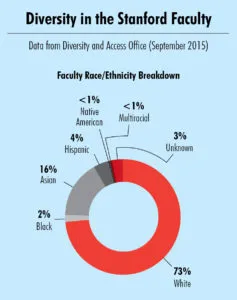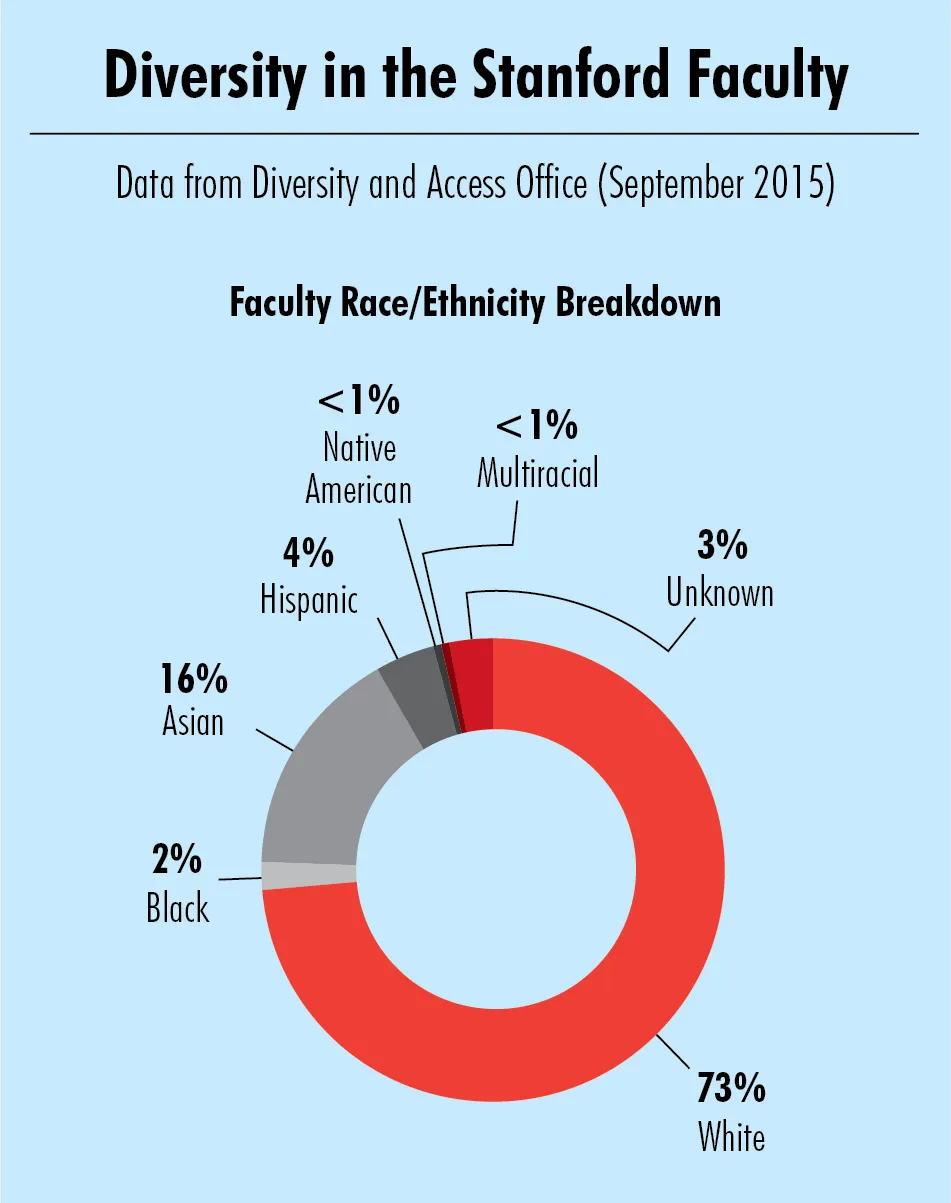Persis Drell, the first female dean of engineering at Stanford, is set to become provost on Feb. 1. At the School of Engineering, Drell made increasing diversity in academia one of her priorities, and she hopes to do the same in her role as provost.

As of September 2015, Stanford’s faculty is 73 percent white and 73 percent male, mirroring general trends across the United States.
According to the National Center for Education Statistics, in 2013, 58 percent of full-time professors in the United States were white men, 26 percent were white women, about 11 percent were men of color and about 4 percent were women of color.
The demographics are slightly more diverse for associate and assistant professors, instructors and lecturers. Overall, 43 percent of faculty were white men, 35 percent were white women, 12 percent were men of color and 10 percent were women of color.
Acknowledging that the department faculty hires new professors, Drell emphasized the importance of faculty diversity at Stanford.
“It’s taken me awhile to understand this,” Drell explained. “But I am now appreciating that for a young African-American student, a young Latino student, a young transgender student or for a young female student in a STEM field, there is nothing more validating than having someone at the head of that class who looks like you.”
A report by Catalyst suggests that diversity is especially lacking among tenured professors. While women held nearly half (48.4 percent) of all tenure-track positions in 2013, they held just 37.5 percent of tenured positions.
This discrepancy is exacerbated for women of color: Asian women held 4.8 percent of tenure-track positions and 2.6 percent of tenured positions; black women held 3.7 percent of tenure-track positions and 2.2 percent of tenured positions; and Hispanic women held 2.5 percent of tenure-track positions and 2.3 percent of tenured positions.
Gender appears to affect pay as well: Female professors earned $108,031 a year on average, compared to $123,899 for their male colleagues.
Drell has made diversity in academia a priority in her role as dean of engineering and will continue to do so as provost, saying the “pipeline” starts with the undergraduate class.
“What we’re all always doing is looking at this pipeline that starts with our incredibly diverse undergraduate population… [and asking,] Where is there a leak in the pipeline?” Drell said. “Are we thinking as hard as we can be about how to admit a spectacular and diverse graduate class? In our faculty hiring, how can we be sure that we’re not letting unconscious bias or whatever else keep us from hiring the most outstanding diverse faculty?”
At the School of Engineering, Drell helped implement a program providing need-based financial aid for any undergraduate student accepted into a fifth-year engineering coterm program.
“Forty percent of our undergraduates want to coterm, but the fifth coterm year is pay-as-you-go,” Drell said. “So it became a wealth selector – and as a wealth-selector, a diversity de-selector.”
Drell was the only female in her class as a graduate student at Berkeley, which gave her “a feeling of being very conspicuous.”
“I didn’t ask a single question in the big first-year graduate classes,” Drell said. I thought if I asked a question, everyone was going to remember that I had asked that stupid question. It’s given me an awful lot of empathy with students who are in a classroom where they feel that they’re going to stick out.”
Currently, Drell teaches PHYSICS 41A, a companionship course to the introductory physics class for students who want additional help. While the physics major is known as having one of the highest male-to-female ratios, Drell noted that her class was traditionally “two-thirds women, one-half students of color.”
Even as provost, Drell will continue teaching PHYSICS 41A.
“I’m not even sure I have the language to describe it, but it does feel different to have a class that is very diverse, and I love it,” she said. “So I’m going to keep teaching 41A even as provost… Teaching that class is so inspirational for me that I just feel it’s worth the extra time, because what I gain from it is so important.”
Contact Tia Schwab at kbschwab ‘at’ stanford.edu.
